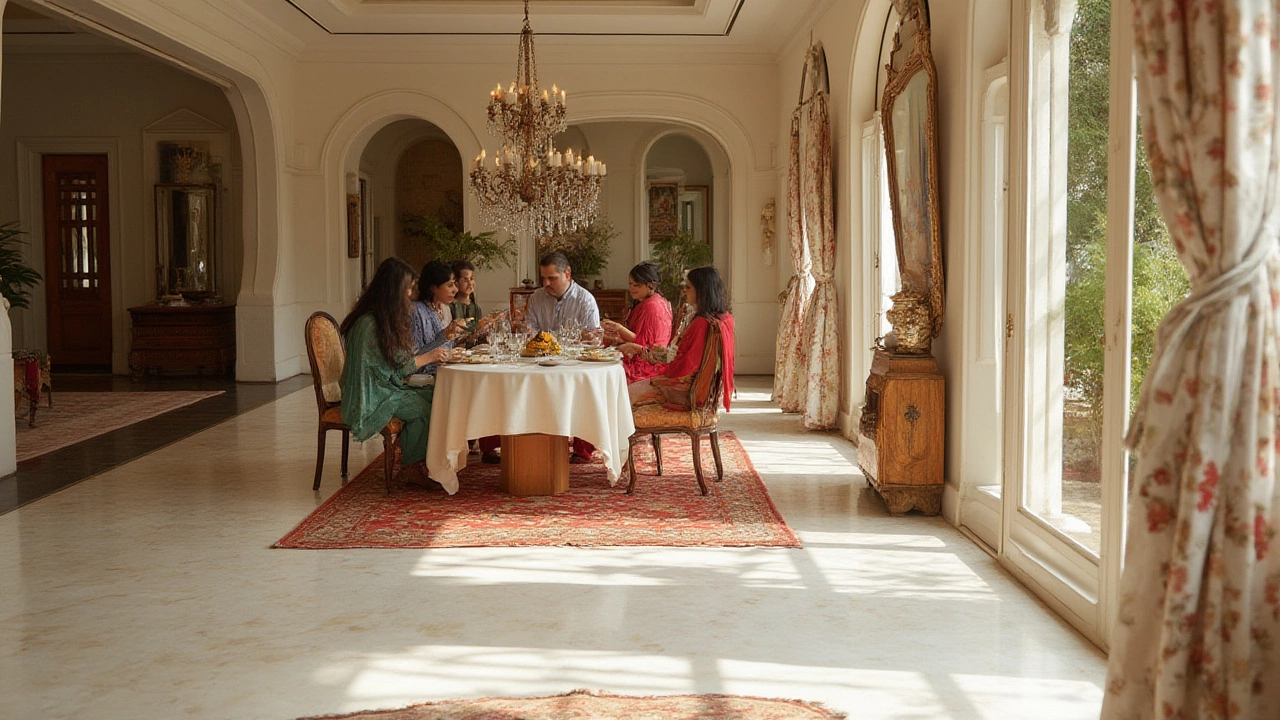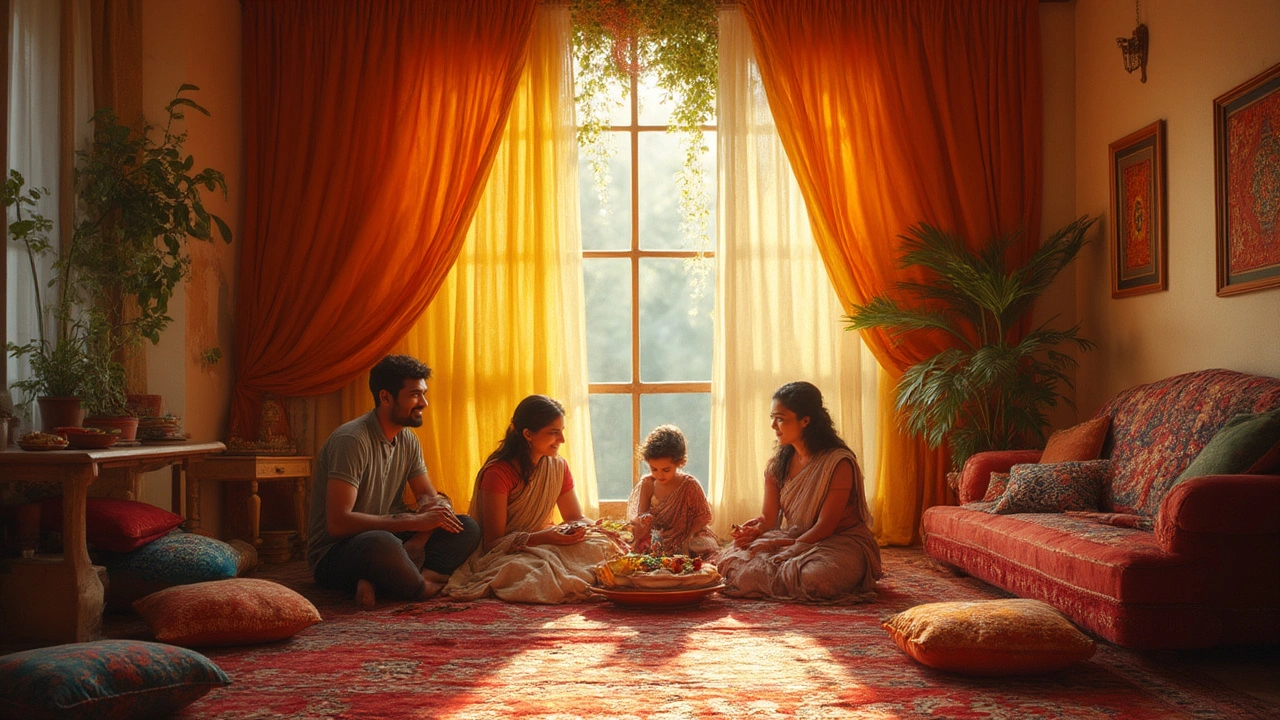Ever moved furniture for the tenth time, hoping your floors would somehow magically match that new sofa? You're not the only one. Most of us dream about flooring that just works—something you don’t have to redesign around each time your style changes or you change the color of your throw pillows. The hunt for a floor color that goes with everything is practically a rite of passage for every homeowner or renter.
Here’s the truth: flooring is your home’s biggest canvas. It sets the mood, ties everything together, and if you nail the color, it makes decorating a breeze. That’s why designers and real estate pros always obsess over “neutral” choices. But “neutral” doesn’t have to mean boring. Floors might last a decade—or even longer—so picking the right color upfront means you'll have more freedom (and less regret) as trends come and go.
The Timeless Appeal of Neutral Floors
Neutral doesn’t mean bland—it’s more like a solid, reliable friend that lets you pull off statement walls, bold area rugs, crazy art, or ever-changing furniture. The most popular neutral tones for floors are natural wood shades, soft grays, warm beiges, off-whites, and subtle taupes. These tones are low drama, but they know how to play support for high-drama accents.
Let’s get specific. What about hardwood? Light oak, maple, and birch are top choices, and for a good reason: they work with virtually anything you throw at them. These softer-yet-warm shades bring out the best in both cool and warm color palettes. Walk into a modern Scandinavian-inspired living room or a traditional farmhouse kitchen, and you’ll notice that pale floors give a sense of airiness and space. According to a 2023 Houzz survey, over 62% of homeowners renovating their floors in the US chose a neutral wood or wood-look floor.
Engineered wood and vinyl planks mimic these shades perfectly, with the bonus of durability and water resistance. If you lean contemporary, greige—a mix of gray and beige—stands out. It’s a blend that tricks the eye, never looking too cold or too warm. Interior stylists love greige because it morphs, balancing minimalism with cozy comfort. Even better, it minimizes the appearance of dust and footprints compared to solid white or dark brown floors.
Tile and stone fans don’t get left out. Large-format porcelains in matte taupe, creamy ivory, or soft slate create a foundation that looks expensive but never attention-hogging. These picks work whether you crave boho chic, industrial, or coastal style. As for carpet? Pale gray and oatmeal are favorites—again, keeping it unfussy but classy.
It’s not just about avoiding clashing colors. Neutral floors are proven to help homes sell faster and for more money, according to real estate agency reports in 2024. Why? Because buyers can see themselves in the space, not distracted by a wild floor color that clashes with their dream kitchen reno. You’re not just picking a color; you’re laying down resale value.

Pros and Cons: Classic vs. Trendy Floor Colors
The classic camp argues that sticking to tried-and-true neutrals means you never worry about trends fading away. Think of it this way: a sandy oak floor pairs just as well with glossy black leather as it does with hygge-inspired wool throws, all without breaking a sweat. Classic floors are also way easier to match when it comes to swapping out furniture or updating wall colors.
But chasing trends isn’t always the villain. Sometimes, a high-contrast floor gives your home a bold personality or feels more “you.” Black or super dark espresso hardwoods were huge in the 2010s, and while they look sharp in photos, they’re dust and scratch magnets in real life. Bright white floors or bold patterns (checkerboards, anyone?) make strong style statements but demand frequent cleaning, not to mention the emotional labor of always trying to keep up.
Here's a simple table comparing how neutral and trendy floor colors stack up:
| Floor Color Type | Best For | Main Advantage | Main Drawback |
|---|---|---|---|
| Light Oak / Maple | Any décor, Resale | Matches with all styles, airy feel | Can show stains if improper finish |
| Greige / Taupe | Modern, Transitional | Balances warm/cool tones | May look dated if too gray-heavy |
| Natural Beige Tile | Busy households | Conceals dirt, timeless | Plain if paired with beige décor |
| Bold Black / Dark Walnut | Contemporary, Drama | Luxurious, high-end | Shows dirt, scratches easily |
| Patterned / Colored Floors | Personal expression | Unique, lots of personality | Hard to redecorate, polarizing for resale |
If you want a quick win and value practicality, stick with light, neutral wood or wood-look floors. They stay in style year after year, hiding life’s messes a lot better than the ultra-trendy options. But if you love making bold statements and never plan to sell your place, don’t let anyone tell you you can’t rock a deep navy-blue floor—even if it breaks all the “rules.”

Smart Tips for Choosing the Right Floor Color
Got decision fatigue already? Flooring stores overwhelm even the pros. But there’s a method to the madness. You might think you should pull color samples and stare at them for an hour (and yeah, do that), but start by looking at the light in your space. Natural light changes everything. North-facing rooms tend to look colder—light greige or pale oak can warm them up. South-facing rooms get that golden sunshine, so cooler grays and off-whites balance things out. Shift your floor samples around the room during different times of the day to see what real life will look like.
Don’t ignore your walls. If you love deep blue feature walls or forest green kitchen cabinets, a mid-tone neutral floor like taupe won’t compete for attention. But if you’re all about that white-on-white minimalism, a warm blonde floor keeps things from feeling too stark. Most pros recommend working from the bottom up: floor first, then paint, then furniture, then accessories.
If you’re juggling kids, pets, or muddy boots, pay attention to finish. Matte or satin sheens hide scuffs and hair better than the glossy stuff. Fancy herringbone patterns are having a moment, but remember—they’re only as timeless as their color. Stick with floor colors proven to work across styles, and patterns just add fun without risk.
Worried your house will feel too vanilla with all this neutral talk? Here’s the hack: use area rugs for pops of personality. A plain floor is a blank canvas for kilims, geometrics, or high-pile drama. Switch them out when you crave something new. And if a neutral floor bores you after a while, the magic is totally reversible—paint one room, switch out pillows, or hang a giant artwork. Your floor will keep humming happily along with any look.
Quick pro tips to make your new floors look good, no matter what:
- Test floor samples against your largest furniture (think, next to the sofa or bed frame)
- Go for continuity between rooms—especially in open-plan homes
- Pick a floor that matches, not with your cabinets, but with your style (farmhouse, mid-century, etc.)
- Don’t let fear make you go too bland—choose a neutral that feels exciting, not blah
- Remember, lighting can shift undertones a lot, so check at different times
- Consider resale if you plan to move within five years
So, what color floor goes with everything? If you want your home to look fantastic, feel inviting, and make decorating easy, stick with light to mid-toned natural woods, greige, or taupe. They look rock-solid with every trend, every palette, every season of your personal style. And when you get the urge to shake things up, they’ll always cheer you on from the background—never stealing your spotlight.


